Yá’át’ééh: Say "Hello" to Navajo Nation’s Monument Valley
Too many years ago to mention, I watched the classic John Wayne film Stagecoach as part of my A-level studies. Directed by John Ford, it was the very first film - but definitely not the last - to use the immense and now unmistakable Monument Valley to represent the Wild, Wild West in all its epic and untamed glory.
Taken as I was with the backdrop of Stagecoach and its characters, I revisited the film again at university and then during my graduate studies. So, it’s fair to say that for the past, ahem, 20-odd years, I had been somewhat eager to see this landscape for myself. And despite some near misses, much to my chagrin, I’d never quite made it.

National Parks Adventure
No prizes then for guessing what I was most looking forward to most on this, Day Two of our Bindlestiff Tours 3-Day National Parks adventure across the Southwest. Of course, it should not be overlooked, that we had started the day watching the sunrise over the Grand Canyon from its East Rim without another soul in sight, having spent the first day of our tour, flying over, gazing across and hiking into the epic canyon after a trip down Route 66.
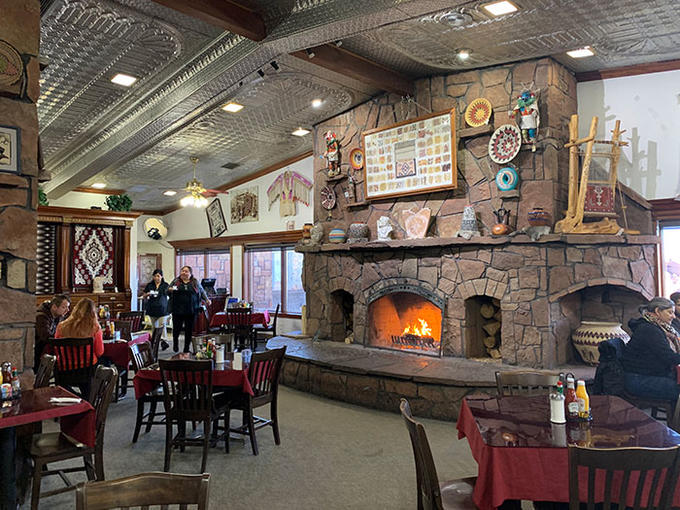
Cameron Trading Post
Reluctantly leaving the Grand Canyon behind us - exactly 100 years to the day of its founding as a National Park in 1919 - we passed through the Kaibab National Forest on our way to the historic Cameron Trading Post for a much-needed breakfast.
After a slight delay caused by some unscripted excitement in the shape of a blown tire, deftly dealt with by our really rather fabulous guide Joel Clark along with my fellow travellers, by the time we arrived at this famous outpost we were a little ravenous. Beneath the ornately decorated tin ceiling and in view of a wall of Tiffany glass windows, I plumped for a fusion dish quite unlike any I had encountered before: prickly pear stuffed French toast. As unique as the menu promised, the subtle cactus jam may have been a little sweet, but there was certainly none left.

Stomachs filled and back on the road, the scenery slowly changed. Clumps of sage brush and grasses gave way to taller, bushier juniper trees, sporadically pock-marking the desert snow on each side of the road and as far as the distant slopes of the long stretch of hills that frame this part of our road trip.
Never short of an entertaining anecdote, Joel regaled us with tales of the history of relations between Native Americans and settlers and how the cultures clashed and cooperated over time. Western businesses, Joel told us, had to adapt to accommodate “Navajo Time”, which dealt in days and seasons and years rather than hours, minutes and seconds.
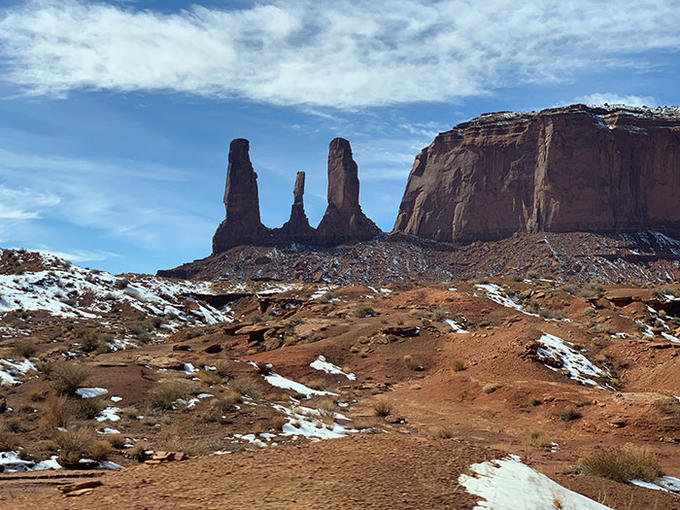
Bindlestiff Tours
Quite right then, that the introduction to Monument Valley we were due to undertake as part of our Bindlestiff tour, would be led by a very unassuming Navajo by the name of Bobby – although I should point out he was perfectly on time and there to meet us as we parked up outside the visitor centre that overlooks the valley. The view afforded us our first appreciation of the scale of these impressive, and aptly named, monuments, abruptly jutting from the desert floor, some as high as 1,000 feet.

We switched to a four-wheel drive and, as we descended lower into the valley itself, Bobby shared his knowledge of a place his ancestors have held dear for centuries. A valley of freestanding monuments made up of harder rock exposed when the softer rock of the plateau was eroded by the power of water over time, Monument Valley has been a Navajo Tribal Park since the 50s. Iron oxide gives the sandstone towers their vibrant red colour – or the “light within the rock” in Bobby’s more poetic words.
Offering a glimpse into his culture, he revealed the Navajo call themselves Dine, which simply means “the people”, before teaching us how to say hello - yá’át’ééh, sounding out “ya-hey-tay” slowly for us.
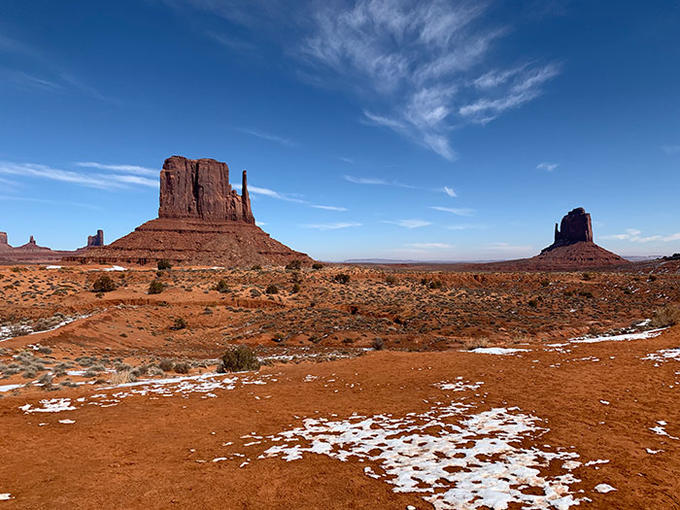
East and West Mitten Buttes
Our first stop brought us the closest we would get to two of the valley’s more recognisable buttes, to give these towers their proper name. East Mitten and West Mitten are so called because on one side of each neighbouring hunk of rock, in near perfect symmetry, a thin terracotta spire rises to form each of the mitten “thumbs”.
It was then that Bobby began to sing a traditional Navajo song. Listening to his low, murmuring chant and, having finally completed the long overdue pilgrimage here, I really began to appreciate the spirituality of the place, which Joel had previously tried to describe to us.

John Ford Point
Next up came John Ford Point, offering the finest view point of the full expanse of the valley, where the director would have set up his cameras to capture the famous chase scene at the end of Stagecoach, when the title vehicle comes under attack. We spent a considerable time trying to capture the scene with our own camera equipment, but nothing competes with the naked eye, and so we simply stood and took a moment to appreciate the full sweep of one of nature’s finest skylines before making our way back up.
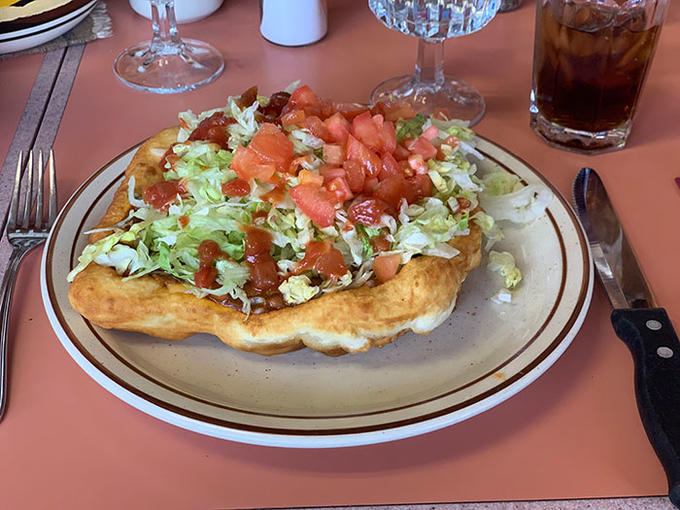
Navajo tacos
Over a special lunch of “Navajo Tacos”, made with a base of traditional “fry bread” covered in spiced minced beef and salad, Joel let it be known that our humble guide is actually Navajo royalty. Bobby’s great-great-grandfather, in turns out, was Chief Hoskininni, recognised as the last ever chief of the Navajos. I chuckled to myself at the revelation – essentially our tour had been the equivalent of being shown round Buckingham Palace by Prince Harry.
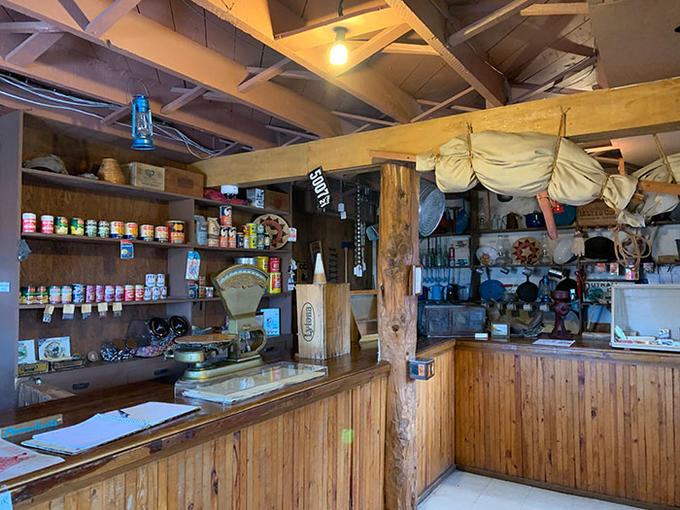
Goulding's Monument Valley Museum
After leaving Goulding’s Stagecoach Dining Room – named after Harry Goulding, the man who quite rightly convinced Ford to visit the valley and consider it as a location for one of his Westerns – we spent some time exploring the small museum next door, before I grabbed the only remaining DVD copy of Stagecoach from the gift shop. One of the museum’s rooms, lined with posters from every other film that has called upon this iconic backdrop from Thelma and Louise to Back to the Future Part III, set us up perfectly for the last stop on today’s tour.

Mile Marker 13
Just a few minutes away we paused at Mile Marker 13 and looked back at the highway stretching away and disappearing between the distant buttes. Made famous by being part of Forest Gump’s running route, we had some fun taking it turns to jog down the centre of the road mimicking Tom Hanks’s bearded athlete. Film fan or not, it’s certainly worth the short drive here to enjoy a final, unmissable view of this epic valley.
As the evening drew in, we made our way to Page, Arizona, from where we would access Antelope Canyon and Horseshoe Bend the next morning, before driving to our final stop on the tour, Zion National Park. I have to admit, I had no real concept of what Zion had to offer, but it turns out even if I’d had the very highest expectations, they would have been blown out of the water...
Phil explored the Southwest on the three-day Winter National Parks Tour operated by Bindlestiff Tours. In winter, the tour departs Las Vegas on Monday from November to March. A summer version of the tour departs on Mondays, Thursdays and Saturdays from April to October, with an additional camping option as well as lodging. Ask your Travel Consultant about adding one of these tours to any West Coast USA Journey, one of many adventures you can enjoy with Bindlestiff Tours across the US Southwest, Western Canada and Alaska.




